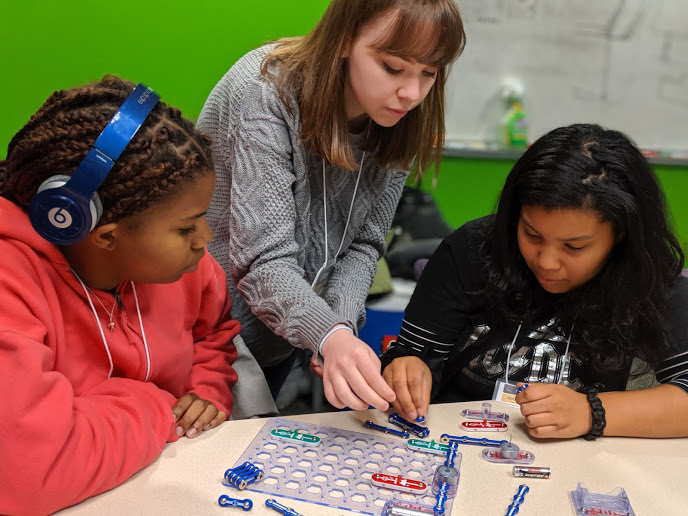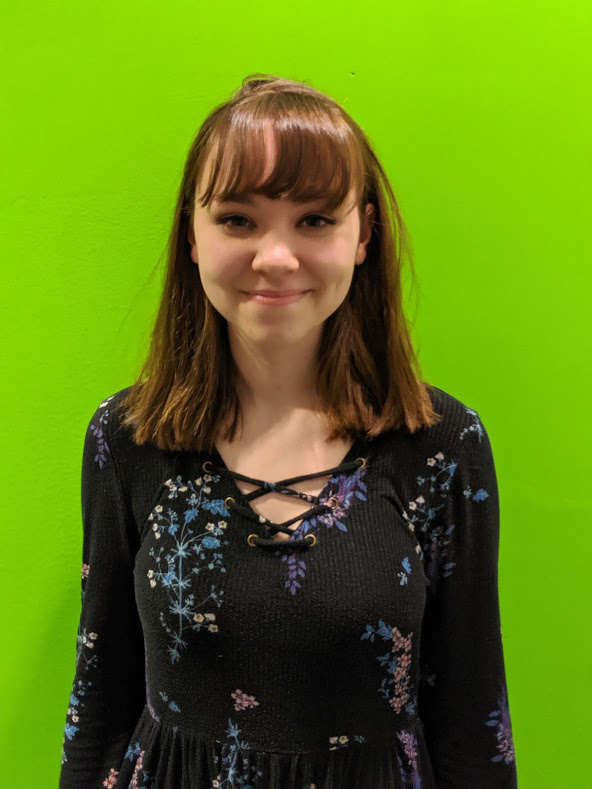Our Little Red Schoolhouse Adventure: An Adler Teen’s Experience

Header Image: Adler Teen Alum Grace Crim is seen here working with other team members who were part of the Adler Teens Stratonauts program.
Seeing a night sky—specifically one that is not affected by light pollution—can be life-changing! If you live in Chicago or a large city with lots of lights, those lights will drown out thousands of twinkling stars. Several of our Adler Teen Programs allow teens to study and view a dark night sky, sometimes for the very first time. Adler Teen Alum Grace Crim went on a trip to the Little Red Schoolhouse Nature Center in Willow Springs, Illinois during her time as an Adler Teen Intern with the Stratonauts program. There, they studied light pollution by collecting data using GONets! Read about their trip and her experience looking up at the stars.

—
It was a chilly afternoon in late March when we arrived at Little Red Schoolhouse for the first time. After a long drive, everyone was eager to tumble out of the bus we had travelled in together, stretching our legs as we admired the brisk, fresh air and towering trees above us. We walked through the small parking lot to enter the building adjacent to the historic bright red schoolhouse, a small garden separating the buildings. We brought our GONets inside, the main emphasis of our research with the Adler. Our mission is to reduce light pollution, especially in urban areas, by gathering more data on it and introducing light pollution prevention as a citizen science. At Little Red Schoolhouse, we met a few of the scientists who worked with the park, were interested in our project, and would be joining us that night. After waiting a while for the Sun to begin setting, we strapped on our boots, put on our coats, grabbed our GONets, and began the trek through the grounds.
The Little Red Schoolhouse is surrounded by a large forest; a small path leads from the parking lot through the trees and into the swampy overgrowth. It had rained recently, so the path was slick and the entire forest smelled of moist grass. We trekked through the muddy forest before the Sun set, placing our GONets at locations where they would be easily found again, but would be able to take pictures of the night sky. This was a difficult task, as the forest was large and there were few spaces where the thick foliage did not block the camera’s view up.
GONet placement was not our only mission that night. The keepers of the small park on the outskirts of Chicago were teaching us about the amphibious night life at Little Red Schoolhouse. We were recording audio and pausing throughout the trail to hear the echoing calls of the small frogs scattered throughout the woods.
Not long into our hike, the Sun set completely. Since this was gradual, we, the student interns of the Adler Planetarium’s Stratonaut program, did not think to continue looking up to check the declination of the Sun. One part of the trip I remember vividly is the moment we did. Chris, our mentor and leader, shouted to us: “Look up, team!”
When we did, we all became silent. Through the patchy leaves of the trees that towered above us, a sea of the darkest night sky many of us had ever seen was overhead with what seemed to be billions of small specs, some brighter than others, but more than I had ever seen in my life. The untouched night of Little Red Schoolhouse seemed endless, its majesty extending forever in any direction. As we stared up in awe, the only noise came from the croaks of the toads and frogs hidden just out of sight. The researchers with us chuckled a little while we excitedly pointed out stars to each other for the rest of the night, clearly amused by how starstruck we were (pun intended).
Many kids who grow up in urban areas do not get the moment we did until much later in life. When they look up every night, they see the orange glow of the city around them instead of the billions of shimmering stars. This is one of the reasons why light pollution awareness is so important. No one realizes how much they are missing out on until they are able to see the unadulterated sky for the first time. When this issue is brought to light, the experience of going out in the dark is given to people who have never had the opportunity to see the sky in its rawest form.
Little Red Schoolhouse is currently trying to become an Urban Night Sky Place through the International Dark-Sky Association. With an accreditation such as that, Little Red Schoolhouse would be able to give the experience of being “starstruck” to many more people, especially if they were coming from Chicago.
—
Here at the Adler Planetarium, we have tons of STEAM (science, technology, engineering, arts, and math) opportunities for teens to get involved! Through our Adler Teen Programs, you can dive into engineering challenges with the Stratonauts, study the impact of light pollution with Y.O.L.O, and so much more. Read Adler Teen Duncan A. Yuen’s experience visiting Little Red Schoolhouse Nature Center to see a dark sky outside of Chicago and follow Adler Teens on Instagram and Twitter to stay up to date with the incredible work they do. You can also learn about light pollution and how the Adler is working to raise awareness and solve this issue by watching this episode of Adler Astronomy Live.






